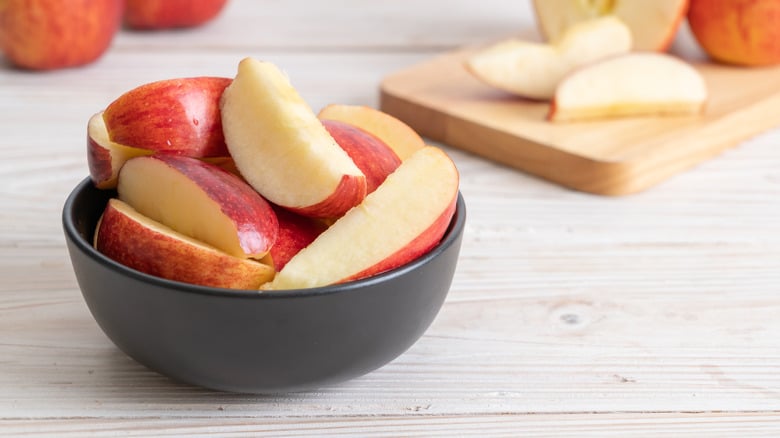What is Image Alt Text, Its Impact on SEO, and How to Write It

Image Alt Text: What It Is, How to Write It, and Why It Matters to SEO
In the world of search engine optimization (SEO), image alt text plays an important role. It helps search engines understand the content of an image, and can also improve accessibility for users who rely on assistive technology. In this article, we'll explore what alt text is, how to write it, and why it matters to SEO.
What is Alt Text?
Alt text, or alternative text, is a description of an image that is displayed in place of the image when it cannot be rendered. This can happen for a number of reasons, such as slow internet connections, broken links, or for users who are visually impaired and rely on screen readers to navigate the web.
Alt text is an attribute that is added to the HTML code of an image tag. It is also used by search engines to understand the content of an image, and can help to improve the visibility of your website in search engine results pages (SERPs).
How to Add Alt Text to Your Images
Adding alt text to your images is an easy process that can be done using a variety of tools. In this section, we'll cover how to add alt text in WordPress CMS, HubSpot CMS, and HTML.
How to Add Alt Text in WordPress CMS
WordPress is a popular content management system (CMS) that allows users to easily create and manage their website. Adding alt text to images in WordPress is a straightforward process that can be done in a few simple steps.
-
- Open the WordPress dashboard and navigate to the Media Library.
- Select the image you want to add alt text to and click the Edit button.
- In the Attachment Details window, enter your alt text in the Alt Text field.
- Click the Update button to save your changes.
How to Add Alt Text in HubSpot CMS
HubSpot is a powerful all-in-one marketing platform that allows users to create and manage their website, as well as marketing campaigns. Adding alt text to images in HubSpot is a similar process to WordPress.
-
- Open the HubSpot dashboard and navigate to the Files & Templates section.
- Select the image you want to add alt text to and click the Edit button.
- In the Image Details window, enter your alt text in the Alt Text field.
- Click the Update button to save your changes.
How to Enter Alt Text into HTML
If you are coding your website by hand, you can add alt text to your images by entering it directly into the HTML code. Here's an example of what the code would look like:
<img src="example.jpg" alt="This is an example image">
In this example, the alt text "This is an example image" is displayed if the image cannot be rendered.
Examples of Good Alt Text Versus Bad Alt Text
Good Alt Text:

<img src="https://example.com/images/office.jpg" alt="Open concept office with natural lighting and modern furnishings">
This alt text is good because it provides a detailed and specific description of the image. It describes the setting, lighting, and furnishings, making it easier for users to understand what the image is showing.
Bad Alt Text:
<img src="https://example.com/images/office.jpg" alt="Office">
This alt text is bad because it is too generic and doesn't provide enough information about the image. It doesn't describe the setting or any of the features of the office, making it difficult for users to understand what the image is showing.
Good Alt Text:

<img src="https://example.com/images/puppy.jpg" alt="Golden retriever puppy playing with a tennis ball in a grassy field">
This alt text is good because it provides a detailed and specific description of the image. It describes the breed of the puppy, the activity it's engaging in, and the setting in which the image was taken.
Bad Alt Text:
<img src="https://example.com/images/puppy.jpg" alt="Dog">
This alt text is bad because it is too generic and doesn't provide enough information about the image. It doesn't describe the breed of the dog or any of the features of the image, making it difficult for users to understand what the image is showing.
Good Alt Text:

<img src="https://example.com/images/cupcakes.jpg" alt="Assorted cupcakes with different colors and flavors displayed on a rustic wooden table">
This alt text is good because it provides a detailed and specific description of the image. It describes the type of food, the colors and flavors of the cupcakes, and the setting in which the image was taken.
Bad Alt Text:
<img src="https://example.com/images/cupcakes.jpg" alt="Cupcakes">
This alt text is bad because it is too generic and doesn't provide enough information about the image. It doesn't describe any of the features of the cupcakes or the setting in which the image was taken, making it difficult for users to understand what the image is showing.
In general, good alt text should be descriptive, specific, and relevant to the content of the image. It should provide enough information for users to understand what the image is showing, without being too lengthy or repetitive. By following these best practices, web designers and developers can ensure that their alt text is effective and useful for all users.
Compare and Contrast Detail Versus Specificity
When writing alt text, it's important to strike a balance between detail and specificity. Detail refers to the amount of information provided, while specificity refers to how closely the alt text matches the content of the image.
For example, consider the following two alt text descriptions of the same image:
Good Alt Text:

<img src="apple.jpg" alt="Red delicious apple slices in a ceramic bowl next to a wooden cutting board">
In this example, the alt text is both detailed and specific. It provides information about the type of apple, the fact that a bite has been taken out of it, and the setting in which the image was taken.
Bad Alt Text:
<img src="apple.jpg" alt="Fruit">
In this example, the alt text is too generic and doesn't provide enough information about the image.
Compare and Contrast Context Versus Specificity
Another important consideration when writing alt text is context versus specificity. Context refers to how the alt text fits into the overall context of the website or page, while specificity refers to how closely the alt text matches the content of the image.
For example, consider the following two alt text descriptions of an image of a laptop:
Good Alt Text:

<img src="laptop.jpg" alt="MacBook Pro laptop on a desk with a white background">
In this example, the alt text is both specific and contextual. It provides information about the type of laptop and the setting in which the image was taken, and it also fits into the context of the website or page.
Bad Alt Text:
<img src="laptop.jpg" alt="Computer">
In this example, the alt text is too generic and doesn't provide enough information about the image. It also doesn't fit into the context of the website or page.
Image Alt Text Best Practices
Now that we've covered some examples of good and bad alt text, let's take a look at some best practices for writing alt text:
-
- Be descriptive: Provide a detailed description of the image, including any relevant details such as color, size, and setting.
- Be specific: Make sure that the alt text matches the content of the image as closely as possible.
- Be concise: Keep the alt text short and to the point, while still providing enough information for users and search engines.
- Be relevant: Make sure that the alt text fits into the overall context of the website or page.
- Avoid keyword stuffing: While it's important to include relevant keywords in your alt text, avoid overloading it with too many keywords.
How Alt Text Affects SEO
Alt text plays an important role in SEO because it provides search engines with information about the content of an image. This information can be used to improve the relevance and visibility of your website in search engine results pages (SERPs).
Here are some ways that alt text affects SEO:
-
- Improved visibility: Alt text can help your images appear in image search results, which can drive additional traffic to your website.
- Improved relevance: Alt text can help search engines understand the content of your website, which can improve its relevance to users.
- Improved accessibility: Alt text can improve the accessibility of your website for users who rely on assistive technology.
- Improved user experience: Alt text can provide additional context for users, which can improve their overall experience on your website.
How Search Engines Use Alt Text
Search engines use alt text to understand the content of an image and to determine its relevance to a particular search query. When a search engine crawls a website, it looks at the alt text of each image to determine what it is about.
Here are some ways that search engines use alt text:
-
- Image search: Alt text can help images appear in search results for relevant queries.
- Web search: Alt text can help search engines understand the content of a page, which can improve its relevance to users.
- Voice search: Alt text can be used by voice assistants to provide information about an image.
Why Alt Text is Important
Alt text is important for a number of reasons. First, it improves the accessibility of your website for users who rely on assistive technology, such as screen readers. Without alt text, these users may not be able to understand the content of your images.
Second, alt text is important for SEO. It helps search engines understand the content of your images and can improve the visibility of your website in search engine results pages (SERPs).
Finally, alt text is important for providing additional context for users. Even for users who do not rely on assistive technology, alt text can provide important information about an image and improve their overall experience on your website.
Alt Text and Accessibility
Alt text is an important part of web accessibility. According to the Web Content Accessibility Guidelines (WCAG), all non-text content on a website should have a text alternative that serves the same purpose and presents the same information as the non-text content.
Alt text is one way to provide this text alternative. When writing alt text for accessibility purposes, it's important to keep in mind that it should be descriptive, concise, and relevant to the content of the image.
Alt text is an essential component of web accessibility, particularly in relation to compliance with the Americans with Disabilities Act (ADA). The ADA is a federal law that prohibits discrimination against individuals with disabilities in all areas of public life, including employment, education, and access to public spaces.
For websites, the ADA requires that they be accessible to all users, including those with disabilities. This means that websites must be designed in a way that allows users with disabilities to navigate and access content using assistive technology, such as screen readers, text-to-speech software, and other tools.
Alt text plays a critical role in making images accessible to users with visual impairments who rely on screen readers to access the web. Without alt text, these users may not be able to understand the content of images on a website. By providing descriptive and accurate alt text, web designers and developers can ensure that images are accessible to all users, including those with disabilities.
In addition to complying with the ADA, providing alt text for images is also a best practice for improving the overall user experience on a website. By making images accessible to all users, regardless of their abilities, website owners can create a more inclusive and welcoming environment for all visitors.
Potential for Traffic from Alt Text
Alt text also has the potential to drive additional traffic to your website. When users search for images related to your content, your images may appear in the search results if they have relevant alt text.
In addition, alt text can help to improve the overall relevance of your website in search engine results pages (SERPs). By providing additional context for search engines, alt text can help to improve the visibility of your website and drive more traffic to it.
Alt text not only plays a crucial role in improving accessibility and search engine optimization (SEO) but also has the potential to drive additional traffic to your website. By providing relevant and descriptive alt text for your images, you increase the likelihood of your images appearing in search results when users search for images related to your content. This can be a powerful tool for increasing your website's visibility and attracting more visitors.
When users search for images related to your content, search engines like Google, Bing, or Yahoo! scan through millions of images to find the most relevant ones to display. Alt text provides additional information about the content of an image, making it easier for search engines to understand its context and relevance. By including keywords related to your content in your alt text, you increase the likelihood of your images appearing in search results.
Moreover, search engines consider alt text as a ranking factor when determining the relevance of a page to a particular search query. By providing relevant and descriptive alt text for your images, you can improve the overall relevance of your website in search engine results pages (SERPs). This means that when users search for keywords related to your content, your website is more likely to appear higher in the search results, driving more traffic to your site.
It is important to note that while alt text can be an effective tool for driving traffic to your website, it is not a silver bullet. It is just one of many factors that search engines use to determine the relevance and quality of a website. Other factors such as backlinks, content quality, and user engagement also play a significant role in determining the search engine ranking of a website.
Conclusion
Alt text is an important part of web design and SEO. It helps search engines understand the content of your images, improves the accessibility of your website for users who rely on assistive technology, and provides additional context for users.
When writing alt text, it's important to be descriptive, specific, and relevant to the content of the image. By following best practices for alt text, you can improve the visibility and accessibility of your website, and drive more traffic to it.
Remember to also consider the context in which the alt text will be displayed, and aim to strike a balance between detail and specificity.
By adding alt text to your images in WordPress, HubSpot, or directly in HTML, you can ensure that your website is accessible and relevant to users and search engines alike.
Overall, alt text is an essential component of web design and SEO, and should not be overlooked. By taking the time to write descriptive, specific, and relevant alt text for your images, you can improve the accessibility and visibility of your website, and drive more traffic to it.
Some additional tips for writing effective alt text include:
- Keep it simple: Use clear and concise language, and avoid using complex or technical jargon.
- Use relevant keywords: Include relevant keywords in your alt text, but don't overdo it. Only include keywords if they are relevant to the content of the image.
- Use appropriate punctuation: Use appropriate punctuation in your alt text, such as commas or periods, to make it easier to read.
- Be mindful of file size: Keep in mind that alt text is part of the HTML code of your website, and can affect the file size of your pages. Be sure to keep your alt text concise and relevant to avoid bloating your HTML code.
- Use tools to check your work: There are a variety of tools available online that can help you check your alt text for accessibility and SEO best practices. Consider using these tools to ensure that your alt text is effective and compliant with industry standards.
By following these best practices and tips, you can write effective alt text that improves the accessibility, relevance, and visibility of your website.







